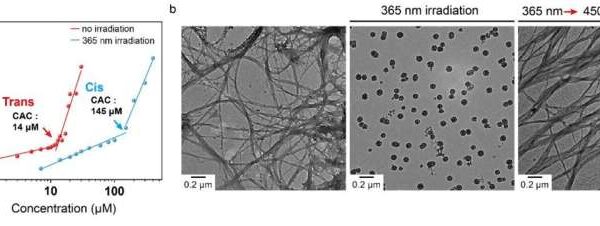Physicists have achieved a groundbreaking milestone by examining the magnetic properties within the nucleus of a rare molecule for the first time. This discovery, involving a radioactive molecule known as radium monofluoride (RaF), provides new insights into the distribution of magnetism in atomic nuclei, a phenomenon previously unobserved in molecular studies. The findings were published on October 23, 2023, in the journal Science by researchers from CERN and the Massachusetts Institute of Technology (MIT).
The study is significant as it investigates how magnetism is distributed in a radioactive nucleus, particularly in relation to the concept of symmetry in physics. As physicists strive to understand the universe’s fundamental laws, the principle of symmetry suggests that natural laws remain consistent across different conditions. For instance, the behavior of a falling object is the same regardless of whether it falls in Seattle or Tokyo. Yet, certain aspects of the universe, such as the apparent imbalance between matter and antimatter, challenge this symmetry.
According to Silviu-Marian Udrescu, a physicist at MIT and co-author of the study, radioactive nuclei present a unique opportunity to explore these asymmetries. The uneven arrangement of protons and neutrons within a nucleus can amplify small deviations from symmetry, potentially revealing new physics beyond the established Standard Model.
Unveiling the Bohr-Weisskopf Effect
To conduct their research, the team studied radium monofluoride, which consists of radium and fluoride atoms. The radium nucleus exhibits an unusual property known as “octupole deformation,” making it resemble a pear or an avocado, as described by Shane Wilkins, the study’s lead author. This distinctive shape allows for the detection of asymmetries that may otherwise remain hidden.
The challenge in studying such radioactive nuclei lies in their inherent instability; they decay rapidly, typically within about 15 days. This decay limits the number of measurements scientists can perform. The researchers managed to produce RaF at CERN’s ISOLDE facility by bombarding a uranium target with high-energy protons, creating the rare isotope radium-225, which was then combined with fluorine gas. Due to the molecule’s fleeting existence, the team recorded only around fifty suitable molecules per second for analysis.
The researchers employed multiple laser beams of varying frequencies to examine the molecules. As the molecules absorbed or emitted light, they observed subtle changes in the light spectrum. These patterns typically inform scientists about electron movement, but in this case, the data revealed interactions influenced by the internal magnetic properties of the radium nucleus.
“The electron actually probes inside the nucleus, so you can no longer treat it as a long-range interaction,” Wilkins explained. “Instead, it starts to sense the internal properties of the radium nucleus itself.” This interaction is known as the Bohr–Weisskopf effect, which had not been documented within a molecule prior to this research.
Future Implications for Physics
The successful mapping of RaF’s internal structure opens the door for future investigations into even smaller asymmetries that may challenge the existing understanding of fundamental physics. The next phase of research will involve slowing and trapping these molecules using lasers, enabling even more precise measurements.
Udrescu emphasized the potential of these molecules as powerful tools in the search for new physics. As researchers continue to delve into the complexities of atomic nuclei, this study not only enriches the field of nuclear physics but also holds the promise of uncovering deeper truths about the universe. The implications of this work may extend far beyond the laboratory, contributing to a more comprehensive understanding of the fundamental forces that govern existence.






































































